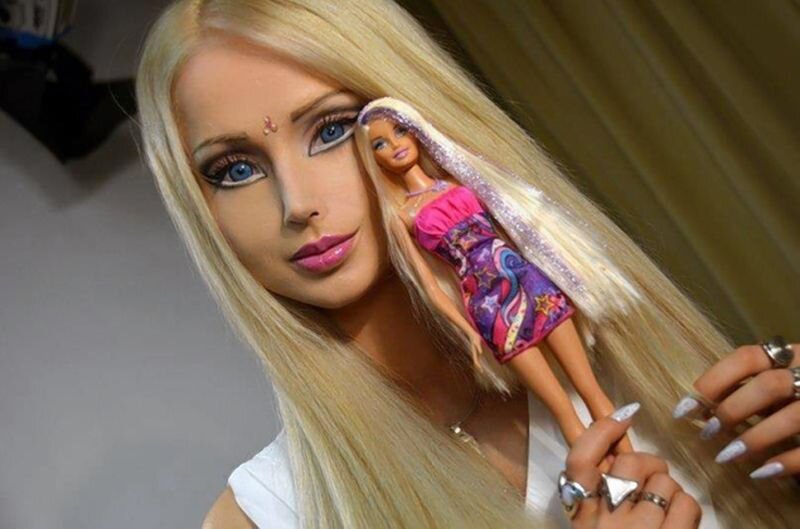History & Philosophy of Plastic Surgery
Plastic surgery is something we take for granted these days. You either know someone who has had it or certainly knows about celebrities who have had it. But what were its beginnings and evolution? It started as a restorative procedure for war victims and is now mainly cosmetic. It may come as no surprise that plastic surgeons debate over what constitutes good cosmetic surgery and what goes too far. Nonetheless, plastic surgery is now so much a part of (privileged) daily life that people get addicted to it, and a minority seek out an extreme look that makes them appear more like a doll than a human.
Early Days: Restorative Surgery
The sophistication of and advancement of cosmetic and restorative surgery in the last thirty years has led to the improvement and recovery of hundreds of thousands of lives. Anyone skeptical about surgical intervention need only look at photographs of the horrors of, say, the First World War, of myriad gouged faces, imponderably disfigured and robbed of any prospect of eking out an everyday existence.
Or we could consider the developments in breast reconstruction such that women who have cancer and facing a biopsy of one or both breasts need no longer look to a future of insecurity and unattractiveness, but, if the cancer is not malignant, may walk out with better breasts than what they once had.
Other forms of prosthetic enhancements were prompted by the spread of polio in the 1950s. But within this biological and emotive landscape, there is no qualitative point of demarcation between salvaging dignity from tragedy to where cosmetic surgery is used for self-improvement.
And from thereon, we have an addiction, where the perennial patient becomes obsessively all-body much as the bodybuilder plays brinkmanship with his health to be the appearance of more healthy than healthy, more than just good but really good.
Restorative to Cosmetic From Getting Back to Normal to Better Than Normal
But it is also this muddy transition from compassionate restoration, a salutary benefit of the technological age—on par with mending bunions, replacing teeth or removing moles—and the relative difference between necessity and the necessity spurred on by desire, that is also the cause of some critical unrest and disapproval.
As Suzanne Fraser adds, for feminists, a dramatic divide exists between reconstructing a syphilitic nose and ‘the reasons why appearance should be so important as to compel women to risk injury, disfigurement or death in a procedure on a healthy, and by all accounts, normal, body’.[i] Her counterargument is that women who undergo such surgery seek a new level of social attainment, where appearance is an undeniably central component.[ii]
Katherine Hayles rues the ‘nightmare of a culture inhabited by posthumans who regard their bodies as fashion accessories rather than the ground of being’.[iii] And for those who seek a specific ideal type, there are concerns over race that are seldom voiced in discussions of body modification. Arnold, Barbie and Ken, are, after all, white.[iv]
As Elizabeth Haiken correctly observes in one of the earlier cultural studies on cosmetic surgery, ‘Cosmetic surgery lies at the nexus of medicine and consumer culture’.[v] As opposed to the soft anarchy of the hippie culture of the protest era of the 1960s and ‘70s, plastic surgery plays its part in bringing people to a common standard advanced through repeated media representations and stereotypes. In the quest for what is desirable and enviable, people find themselves locked into the oblivion of sameness.
As Haiken remarks, ‘the widespread adoption of the surgical solution reveals a frightening vision of Americans as conformists, bent on achieving a commodified, advertising-driven standard of perfection’.[vi]
Cosmetic Surgery and Social Mobility
She traces this trend back to the early twentieth century when restorative surgeons began to observe a growing market of people wanting to participate physically in a mass culture that was repeatedly doling out judgments as to what was desirable and was undesirable.
A citable early case was when the Jewish actress Fanny Brice in 1923 decided to have a nose job, prompting Dorothy Parker’s much-repeated quip that she has ‘cut off her nose to spite her race’.[vii] But the culture of mobility and capitalism also conspired to create a view that beauty could be acquired rather than an inherited trait.[viii] Beauty to the highest bidder.
Fanny Brice's surgical improvement was one of the many attempts to erase the signs of race and creed, real or perceived.
De-racialising
Today an entire industry is given over to lifting the fold over the eyes to what plastic surgeons call ‘optimalizing’ ‘Asian eyes’[ix]—something that occurs more prevalently in a Western and Caucasian cultural setting—or to sharpen rounded features of African Americans.
The signal case in all of this is Michael Jackson, whose ‘Frankenstein charm’ comes at the expense of countless procedures that altered his bone structure, including reducing his nose to an elfin sprig.
He alleged to Oprah Winfrey in 1993 that the lightness of his skin owed itself to a skin condition, but even if this were true, this does not mitigate the fact that he had been on a campaign to make himself less black.
Despite his grotesquerie, Jackson’s example caused more Afro-Americans to seek out surgery, the ones that is, that could afford it.[x] In thrall with their son (who had been in the thrall of Diana Ross), Jackson's sisters Janet and La Toya followed suit, primping their noses and sharpening their cheekbones.
Comparing pictures of them in the early 1990s reveals the siblings to resemble one another. Surgically, they had become clones. Barbie, in a sense, lies waiting in the shadows. M. G. Lord rightly argues that Barbie has become something of a fixed standard by which Americans measure themselves, thereby a standard by which 'aliens' are compared. She has become a certainty principle in an age of supposed pluralism.[xi]
The Lure of Barbie and Ken
It is important to stress that, more often than not, Barbie lurks as a covert, not an overt, standard. With over 90 percent of girls in the US having one, she is still, in the words of Uwa and Swedlund, ‘an incredibly resilient visual and tactile model of femininity for pre-pubescent girls headed straight for the twenty-first century’.[xii]
With this compelling thought, in what is a paradox that has eluded most surgery-seeking individuals, Rhian Parker explains that most women want to be normal in opting for plastic surgery. At the same time, they remain unclear as to what exactly ‘normal’ is. ‘Achieving a natural look was seen as important so that they did not stand out. But again, “natural” was not clearly defined. The repertoires of “natural” and “normal” were also part of the doctor’s narratives about cosmetic surgery.’[xiii]
Moreover, the motivations remain equally obscure: while many women, according to Parker, claimed to want surgery for themselves, it was inevitably to achieve a greater degree of social approbation.[xiv] But the strongest argument is that ‘normal’ is a fictional centre that is, at best, of a foreign, artificial shape.
What’s a Natural Look? (Do You Care?)
Again we veer back to the highly porous, shifting, and ultimately amorphous concept of nature. In this vague questing after the natural, Suzanne Fraser stipulates that first, one must not forget nature's gendering as female as against the maleness of science and culture. Constructions of nature have, she argues, opened up the field of cosmetic surgery since it created the possibility of, as it were, attaining a greater or better state of nature. One version of nature is as 'the inert raw materials that culture sets to work', while the Enlightenment view has held sway to this day an elevated view that brings it 'to the status of Ideal model for culture'.[xv]
Drawing on the work of Donna Haraway (one of the first to theorise the relationship between the humans and cyborgs), Fraser rejects both positions—‘nature as origin and resource’— to reframe nature as ‘a set of objects, practices and places’, a position that has strong ramifications for ecology and for ‘human nature’.[xvi]
At the root of Haraway’s (and subsequently Fraser’s) reorientation is the attempt to unmask and finally disrupt a philosophically Christian model of technoscience whose teleology is Edenic bliss, a redeemed and sanitized space whose Janus face, for Haraway, is genocide and ecological catastrophe.[xvii] The 'mutant' that she invokes sidesteps this narrative and opens up a new set of myths whose negative ramifications are less horrifying.
For Haraway, Frankenstein's monster and Barbie, the disabled and ideal, the monstrous and the angelic, are effectively one to tease all this out. Haraway used the term prosthetics to this end, as it has the double meaning of substitute for a lost limb and a supplement as an enabler beyond 'natural' limits. Although she doesn't mention them, the bionic man ('Gentlemen, we can rebuild him') and woman enter into this territory.
Such types marry human flesh with the machine, thus perturbing the kinds of ethics and assumptions built on humanist precepts to 'force a rethinking of kin'.[xviii] Allied to the ethos of queer, the cyborg is thus a ‘mixed breed’, who is, in the words of Sharon Betcher, ‘a fugitive, from Christian salvation history’.[xix] But Betcher refutes Haraway’s position as impracticable in practice, as people with prostheses remain deeply other, a gender subclass.[xx] She suspects that Haraway's suggestion that ‘we are all cyborgs’ is simply the same humanist holism in a different shell.[xxi]
The Techno-Human
Timothy Lender, in his essay 'Techno-Humanism' echoes similar concerns, stating that the human and the digital must cease to be two separate entities and that we must dispense with the cyborg as a'a human-machine hybrid, where the machine is a (possibly dangerous) supplement, tool, and extension of the human'.[xxii]
Such a view vouches for the additive ethical model of cosmetic surgery that Fraser advances. But it is a position that also courts its likely set of detractors, from accusations of vanity (which mainly crop up in the Schadenfreude accompanying publication of ‘plastic surgery disasters’),[xxiii] To technological excess and a kind of techno-bodily greed.
To return to the main point, this desire, which does lapse into greed, continually converges on the same imaginary points, of a body whose facets exist outside the realm of nature but which nevertheless epitomize nature.
Hence, in Fraser's words, ‘”Natural” is a word that always replaces a complex of (often) less convincing, powerful or controllable ideas and issues. It is a rhetorical device, where its power to persuade is frequently taken for granted, indeed, relied upon’.[xxiv]
Similarly, as prototypes, the Arnie, the Barbie, and the Ken, are bodily equivalents of 'rhetorical devices' that are 'taken for granted, indeed, relied upon'.[xxv]
References:
[i] Suzanne Fraser, Cosmetic Surgery, Gender and Culture, Hampshire and New York, Palgrave Macmillan, 2003, 5.
[ii] Ibid., 5-6
[iii] K. Hayles, How We Became Posthuman, 5.
[iv] Ibid., 6.
[v] Elizabeth Haiken, Venus Envy, Baltimore and London: John Hopkins U.P., 1997, 12
[vi] Ibid., 15.
[vii] Ibid., 96.
[viii] Ibid., 97.
[ix] I am grateful to Dr. Darryl Hodgkinson for this correction of an earlier version.
[x] Ibid., 209
[xi] Lord, Forever Barbie, 177.
[xii] J. Urla and A. Swedlund, ‘The Anthropometry of Barbie: Unsettling Ideals of the Feminine Body in Popular Culture’, in Londa Schiebinger ed., Feminism and the Body, Oxford and New York: Oxford UP, 2000, 389
[xiii] Rhian Parker, Women, Doctors and Cosmetic Surgery: Negotiating the ‘Normal’ Body, Hampshire and New York: Palgrave Mcmillan, 2010, 175. See also Fraser, 70ff.
[xiv] Ibid.
[xv] Fraser, Cosmetic Surgery, 65.
[xvi] Ibid., 66.
[xvii] Harraway, Simeans, 149-153
[xviii] D. Harraway, Modest_Witness@Second_Millennium.FemaleMan _Meets_OncoMouse(tm): Feminism and Technoscience, New York: Routledge, 1997, 119.
[xix] Sharon Betcher, ‘Putting My Foot (Prosthesis, Crutches, Phantom) Down: Considering Technology as Transcendence in the Writings of Donna Haraway’, Women’s Studies Quarterly, 29.3/4, 39
[xx] Ibid., 42.
[xxi] Ibid., 43
[xxii] Timothy Lender, ‘Techno-Humanism’, in Riskin ed., Genesis Redux, 216.
[xxiii] See also Parker, Women, Doctors and Cosmetic Surgery, 193-194.
[xxiv] Fraser, Cosmetic Surgery, 67.
[xxv] Ibid.




